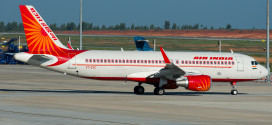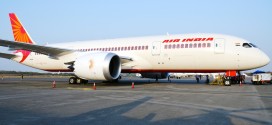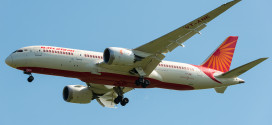While not officially announced, it appears Air India (airline code AI) and Air Canada (airline code AC) have entered in to a code-share agreement to place their airline codes on certain flights of operated by each other. Both the airlines are members of the Star alliance, and reflects for recently joined Air India, the first tangible benefits of joining the global alliance of airlines.
The partnership appears to commence on October 2, the birth anniversary of Mahatma Gandhi, the leader of India’s independence struggle.
Air India will place its AI airline code on the following routes operated by Air Canada. Trans-Pacific: between Vancouver and Hong Kong, Shanghai Pudong and Tokyo Narita. Trans-Atlantic: between London Heathrow and Toronto, Vancouver, Calgary, Edmonton, Halifax, St. John’s Newfoundland, and between Paris Charles De Gaulle and Montreal and Toronto. Air India operates flights from New Delhi to all the four connecting airports i.e. Hong Kong, Shanghai Pudong, Tokyo Narita and London Heathrow.
Air Canada shall place its AC airline code on the following international routes operated by Air India. Between New Delhi and Hong Kong, Milan Malpensa / Rome, Paris Charles De Gaulle, Shanghai Pudong, and Tokyo Narita; and the following domestic routes covering the six major metro cities. Between New Delhi and Bangalore, Chennai, Hyderabad, Kolkata, Mumbai, and Amritsar, and between Mumbai and Bangalore, Chennai, Hyderabad, Kolkata.
While Amritsar is not a major metro, it reflects the strength of the Sikh community in Canada.
Analysis: Air Canada code-share is a smart move by Air India
With India being relegated to Category II status by the US Federal Aviation Administration (FAA), Indian carriers cannot commence new flights to the US, nor can US flagged carriers put their airline code on to Indian carriers.
Air Canada is using this situation to its benefit. For Air India, with this code-share agreement, it has bridged a vital gap in its network; the trans-Pacific connection to the west coast of North American. However, with no flights from the south of India, this code-share will not appeal to the IT industry passenger who will need a three stop connection to the US west coast (New Delhi, Tokyo or Shanghai or Hong Kong, and Vancouver). With the Asian carriers like Cathay Pacific, Singapore Airlines, Thai Airways, and Malaysia Airlines, it is either a one or two-stop connection to the major destinations of San Francisco, Los Angeles, Seattle and Portland, Oregon. Air India may want to consider a flight from Bangalore to Tokyo which will leverage not just the burgeoning Japanese investment in and around the city, but carry the lucrative higher-fare paying knowledge industry worker.
Similarly, while the trans-Atlantic code-shares will offer connectivity to all the major Canadian destinations, it may not appeal to US bound premium and corporate passengers who will need to make a two stop connection en-route to their destination, and Air India is in desperate need of these higher-fare paying passengers.
 Bangalore Aviation News, Reviews, Analysis and opinions of Indian Aviation
Bangalore Aviation News, Reviews, Analysis and opinions of Indian Aviation





Perfect !! and seems like a good start into Star Alliance. AI can check other Star Alliance connectors- with in the range of narrow body services(in DXB, SIN, BKK) and provide vice versa to places like CMB, KTM, DAC, Male, Yangon, to AC/LH/LX
Southern India to the North Asia hubs is a major gap in service caused partially by the bilaterals. While Cathay serves BLR, MAA etc, they do not have smaller US points like SEA, PDX, SJC, SAN. These type of cities are only covered properly by NRT, ICN, and to some extent PEK.
Maybe this is the opportunity for Air India to launch South India – North Asia flights to connect with Star partners Air China, ANA, and Asiana. Although with AI being DEL focused I doubt that’s happening anytime soon.
I thought JL CEO had talked about more Japan-India service and were waiting for the bilateral to open up. I can see a NRT-BLR service working very well. One of the Korean airlines have mentioned in the past that they want ICN-MAA. Unfortunately India is very west focused, and so while EY and EK get all the seats, the airlines to the east (exception being SQ) don’t have the same luck.
BLR-NRT or BLR-ICN would be a good deal…..